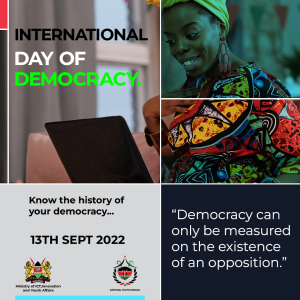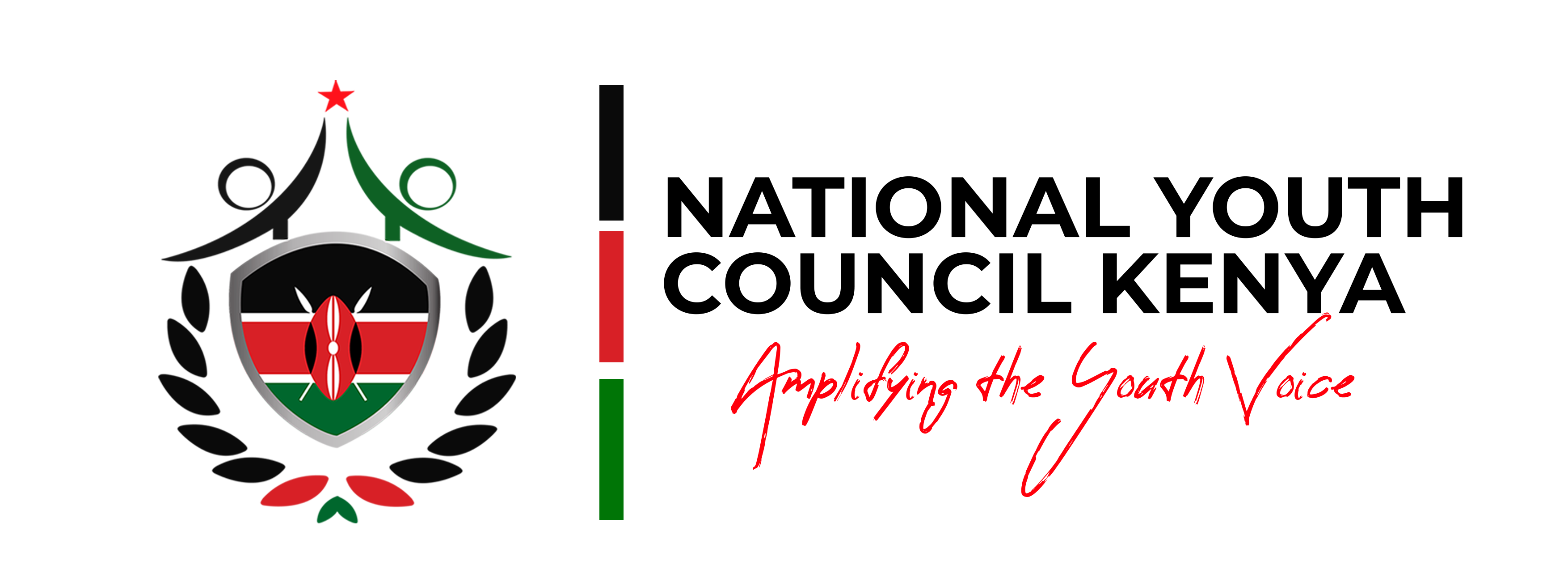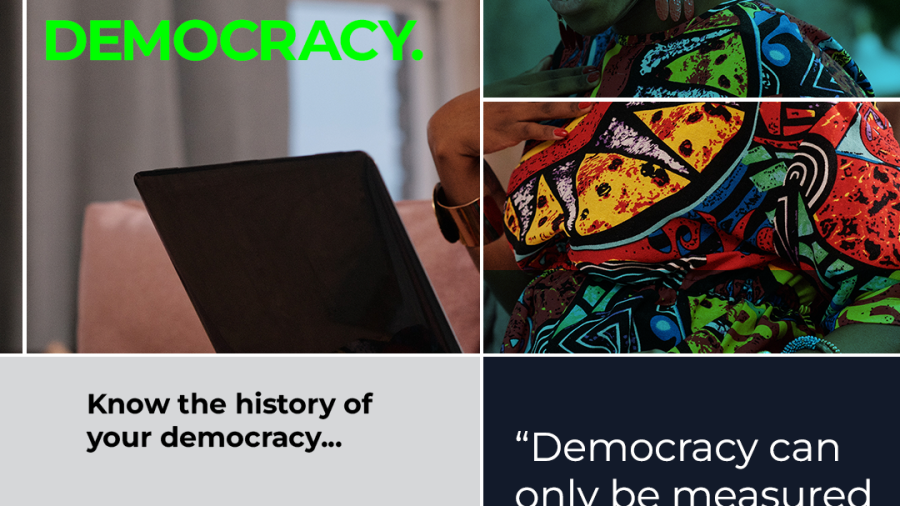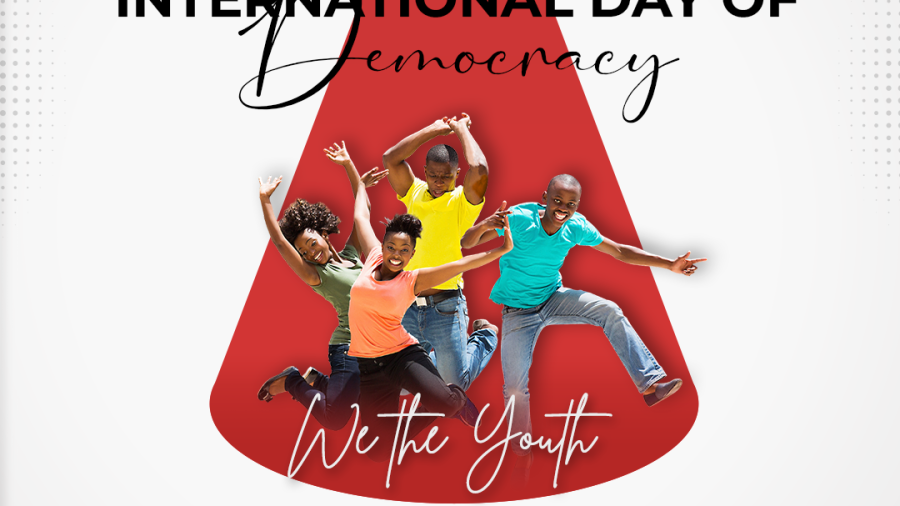
A multi-party system is a political system in which multiple political parties across the political spectrum run for national elections, and all have the capacity to gain control of government offices, separately or in coalition.
The multiparty democracy was moved by several factors which included:-
Following the breakup of the Soviet Union and the emergence of the United States as the sole superpower, many developing nations experienced intense pressure, internally and externally, to switch from single-party to multiparty rule. In November 1991, Western donors acting through the World Bank halted foreign aid while demanding government reform. Multiparty administrations were perceived as better alternatives to single-party administrations, which were labeled dictatorial and tyrannical. Multipartyism was believed to provide more freedom of expression, in addition to checks and balances on officials in government.
During the 1990s, a wave of democratization swept across the African continent. The wave took many different shapes and forms, and sometimes (as in the case of Kenya) international pressure was pivotal in bringing about change.
The Moi government had since 1986 faced mounting criticism from Kenyan church groups, and there had also been a series of riots throughout the country in July 1990. Several church leaders, among them Alexander Muge, Bishop Henry Okullu and Rev. Timothy Njoya called upon the government to create an environment in which Kenyans could participate in government.
Disunity in KANU. There was pressure from individuals who had been expelled from KANU without political alternatives like Jaramogi Oginga Odinga who later formed the Forum for the Restoration of Democracy (FORD) in May 1991. FORD was later officially announced in July 1991 and subsequently declared illegal by the Moi government. Several members of FORD were arrested in November 1991 prior to a pro-democracy rally, which despite having been banned by the government took place. The arrests caused the international community to react strongly with outrage and, more importantly, withdrawing of financial funds. On 26 November 1991 the West discontinued bilateral aid to Kenya.
These events later led to the legalization of opposition parties in December 1991. In a way this enabled Moi and KANU to control the legislative process by having seized the initiative for reform towards a multi-party system. Primarily because of international pressure, but due to domestic pressure as well, president Moi agreed to reforming the party system. A reform that would end the monopoly on political power that his party, KANU, held but also reforms that would address Kenya’s record on human rights that
had come under international scrutiny and increasing criticism. Furthermore, in December 1991, former vice-president Mwai Kibaki, then minister of health, resigned and founded the Democratic Party (DP).
Later in August 1992, FORD split into two factions, which were registered in October as two separate parties. First, the Forum for the Restoration of Democracy -Asili (FORD-Asili) led by Kenneth Matiba (today by Martin Shikuku) and also Forum for the Restoration of Democracy-Kenya (FORD-Kenya) led by Oginga Odinga. Oginga Odinga died in 1994 and was replaced by Michael Kijana Wamalwa. In 1995, Raila Odinga (son of Oginga Odinga) claimed to have ousted Wamalwa as chairman of FORD-Kenya. Strife broke out within the party and as of December 1996 Odinga was reportedly expelled from FORD-Kenya. Odinga announced that he instead had joined the National Development Party and that he had voluntarily resigned from FORD-Kenya. In October 1997 Matiba’s faction of FORD-Asili registered as an independent party, Forum for the Restoration of Democracy for the people (FORD-People). Only FORD-Kenya gained enough votes in the two consecutive elections of 1992 and 1997 to qualify for study.
During the first half of 1992, around 2000 people were killed in tribal clashes in Western Kenya. Consequently, the government put a ban on political rallies, a ban that was later lifted after protests organized by FORD. In December 1992 both presidential and parliamentary elections were held, but because of the oppositions’ lack of cohesiveness and inability to form an alliance against KANU, Moi and KANU were able to remain in control. However, it is contested how free and fair these elections really were, and to what extent Moi and his political machine used their incumbent status to control the results. In 1998 Moi was elected to a fourth term as president with 36.3% of the vote ahead of Kenneth Matiba (26.0%), Mwai Kibaki (19.5%) and Oginga Odinga (17.5%). Of the 188 seats in the National Assembly, KANU won 100, FORD- Asili and FORD-Kenya gained 31 seats each and Democratic Party got 23 seats.
After the 1992 elections tribal clashes continued. In May 1995 a new political party, SAFINA, was formed by opposition activists who claimed that the party intended to fight for human rights and against corruption. The chairman at the time was Mutari Kigano, a prominent human rights lawyer, and as secretary general SAFINA appointed Dr Richard Leakey, a prominent white Kenyan. Today SAFINA is led by Farah Maalim (chairman) and Mghanga Mwandawiro (secretary general).
The Kenya today is marked by increased tension between ethnic groups. Tension that goes back to the days when Jomo Kenyatta was president (1964-1978) and the Kikuyu dominated Kenyan politics. The extent of Kikuyu domination came to alienate the Luo and other ethnic groups within the country. The Kikuyu is the largest ethnic group in Kenya, followed in size by Luhya, Luo, Kamba, Kalenjin and a host of other smaller ethnic groups. Daniel Arap Moi belongs to the Kalenjin group. In Kenya, “Democratization has resulted in reaffirmation of ethnic identities, with political parties emerging along ethnoregional criteria rather than ideological ones.”
The 1992 multi-party election did not change who was in power, and neither the level of corruption within the government. As before, the international community used its weight to put pressure on Kenya to take action against official corruption. However, this time pressure came from the International Monetary Fund who suspended payments in August 1997 pending action on Kenya’s part. Kenya promptly inaugurated an anti-corruption body. However, in late August serious strife erupted in and around Mombasa, essentially along ethnic lines.
Factionalism among the opposition prevented them from presenting a unified front against Moi and KANU in the 1997 elections as was the case in the 1992 elections. Furthermore, again there were widespread allegations of fraud surrounding the election. The December 29, 1997 election reelected Daniel arap Moi as President. In the 1997 presidential election Moi gained 40.64% of the popular vote, Mwai Kibaki 31.49%, Raila Odinga 11.06%, Michael Wamalwa 8.40%, and Charity Kaluki Ngilu 7.81%. In the election to the National Assembly, KANU won 107 out of the now 210 available seats. Out of the opposition, DP gained 39 seats, National Development Party 21 seats, FORD-Kenya 17 seats, and SDP won 15 seats. After the election in 1997, ethnic groups clashed again, this time primarily in the Rift Valley. With the 1997 election Moi was elected to his fifth and final term as president.
Original Parties, from 1950-1962, still continuing to 2000
The Kenya African National Union (KANU) became the single party in the de facto one party state that emerged in Kenya after 1969, only to legally become the only party in 1982. KANU still remains in power, with president Daniel arap Moi as president and the head of state.
New Parties formed after 1962 and continuing to 2000
Democratic Party of Kenya (DP) was founded by Mwai Kibaki in December 1991. Kibaki being Kikuyu appealed greatly to this part of Kenyan society. DP is in general associated with big business and the Kikuyu power elite from the Kenyatta years. The formation of DP clearly undermined KANU’s power among the Kikuyu group when many of them defected to DP from KANU. In many ways therefore, the DP leaders represented the interests of Kenya’s indigenous bourgeoisie. DP favored economic liberalization and privatization of state-owned enterprises. Even though the DP claimed democracy as part of its party’s name, it did not pay much attention to democracy, but concentrated on the old Kikuyu oligarchy.
Forum for the Restoration of Democracy – Kenya (FORD-Kenya) originally was formed in May 1991 as FORD, but later became FORD-Kenya when FORD split up in two factions in August 1992, FORD-Asili and FORD-Kenya. However, only FORD-Kenya has been able to sustain somewhat of a political presence in the two elections 1992 and 1997. It is seen as a radical party, in clear opposition to KANU. Oginga Odinga had been the former KPU leader and one of the most prominent left-wingers in Kenya’s first government after independence. FORD-Kenya was by far the most nationally oriented and intellectual of the opposition parties in Kenya. However, this caused FORD-Kenya to concentrate on national issues and to conduct a Western style election campaign, in a country were grass roots mobilization and local issues are the key to success.
National Development Party (NDP) is led by Raila Odinga (President) and Dr. Charles Maranga (secretary general). The NDP was founded in 1994.
Social Democratic Party (SDP) was founded in 1992. The chairman is Mrs. Charity Kuluki Ngilu and the secretary general is Maurice Kamau Rubia.
Original Parties, from 1950-1962, terminating before 2000
The Kenya African Democratic Union (KADU), sought to safeguard the interests of the country’s minorities against the Kikuyu dominated KANU, dissolved voluntarily in 1964.
THE 2002 ELECTIONS
On 25 October 2002, President Daniel arap Moi officially announced the end of his 24-year rule of the country, dissolving Parliament and launching the electoral campaign for the presidential and legislative elections scheduled for 27 December 2002.
President Moi was constitutionally barred from running for a new term. The nomination of his successor, Mr. Uhuru Kenyatta, son of Kenya’s founding president Jomo Kenyatta, split the ruling party, the Kenyan African National Union (KANU), leading key party and government officials to resign and defect to the main broad-based opposition alliance, the National Rainbow Coalition (NARC).
The elections marked the first time since the establishment of a multiparty system in 1991 that the opposition was able to offer a coherent challenge to the KANU party. Unlike in the two previous elections, when the opposition was fragmented, in 2002 the NARC was a strong alliance of opposition parties that had promised sweeping constitutional reforms and an end to corruption.
Two weeks before the polls, ten political parties signed an electoral code of conduct amid rising incidents of violence, foul language and claims of vote-buying.
Among the five candidates vying for the Presidency, the two main contenders were Mr. Kenyatta and Mr. Mwai Kibaki, the leader of the NARC. Mr Kibaki, a former Vice-President, ran a campaign based on corruption-related issues and Mr. Kenyatta’s lack of political experience, as well as direct attacks on KANU and the country’s rulers for the last 39 years characterised by corruption and mismanagement. He further stressed the fact that the country’s economy was in the doldrums and that the IMF had suspended aid because of concerns about corruption.
Mr Kenyatta had to campaign hard to distance himself from his mentor, outgoing President Moi. Mr. Kenyatta had only entered Parliament in October 2001 as a member nominated by the President, after a failed electoral bid in 1997. During the campaign, he promised to clean up KANU and presented himself as a “fresh face” untainted by power, pointing out that the NARC was full of recent defectors from KANU and led by the “old generation”.
A total of 40,000 local and foreign observers were accredited by the Electoral Commission, making these the most closely scrutinised polls in the country’s history. Both the European Union and the Commonwealth election monitoring groups congratulated Kenyans on conducting free, fair and peaceful elections.
The opposition won an overwhelming majority in both the presidential and parliamentary elections. In Parliament, the NARC took 126 seats out of the 210 at stake, as against 64 for KANU.
On 29 December 2002, opposition leader, Mr. Kibaki was declared Kenya’s third President. He was sworn in on the following day.
Kenya was at a point of consolidating its democratic gains when a government with a reform agenda, the National Rainbow Coalition (NARC), came to power after winning the December 2002 general election. NARC had campaigned on a reform platform, promising to promote economic recovery and good governance reforms. The new government did then implement some good governance reforms, such as initiating the fight against corruption and setting up a semi-autonomous human rights agency. But the government abandoned the reform path halfway after the coalition collapsed due to internal disagreements over power and the distribution of spoils in particular. After the collapse, NARC, like the previous governments, began to secure power for those in leadership positions. A small group of ethnic elites close to President Mwai Kibaki pulled the government out of the reform agenda. They started to consolidate political power by manipulating the political environment and reneging on some of the promises made before coming to power. They manipulated the constitutional review process to come up with a draft that reflected their political interests. They preferred a constitution that favoured their desire to secure a hold on power. This contradiction, in which gains are made through struggles for democracy, but are then reversed through state actions and the practice of politics, has considerably undermined the concrete realisation of participatory democracy. The dispute over the presidential election resulted in unprecedented violence, which divided the country into two major ethno-regional blocs that were fiercely opposed to each other. The post-2007 election violence reversed many of the democratic and economic gains made since the return of multi-party democracy in 1991. The space for the enjoyment of fundamental rights and freedoms contracted. Society became more polarised. Ironically, the post-2007 election crisis paved the way for a greater gain: the promulgation of a new constitution. The crisis revealed a number of fundamental weaknesses in Kenya’s political system that required addressing to prevent future conflicts over contestation for political power. The international mediation resolved that constitutional and institutional reforms were a requisite in this respect. The parties signed a National Accord that outlined the steps towards a new constitution and institutional reforms. A new constitution was promulgated in August 2010.


